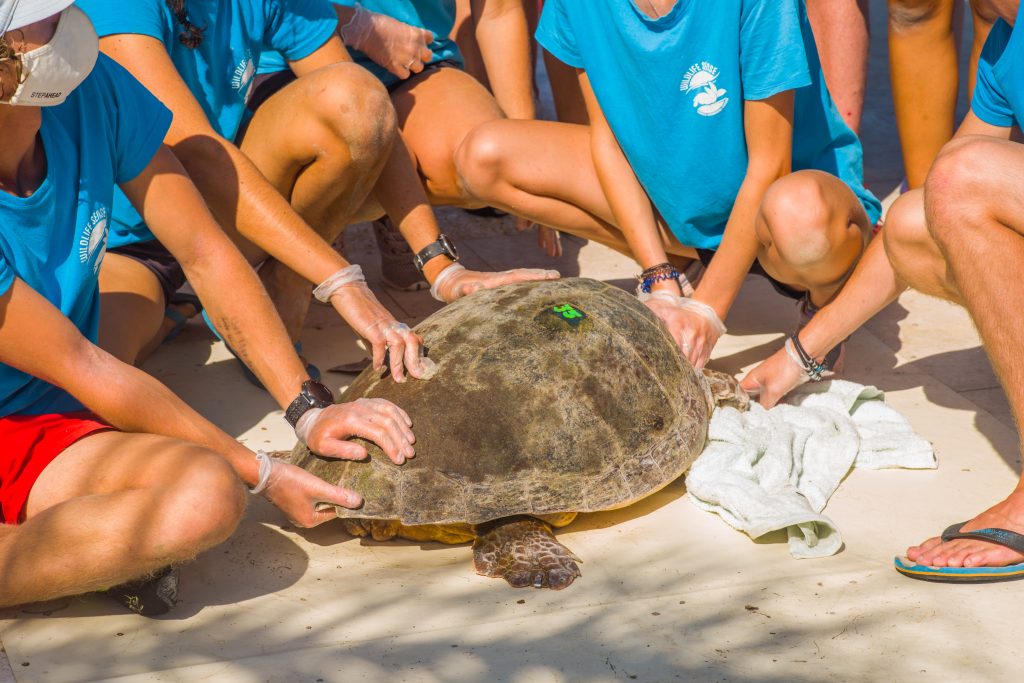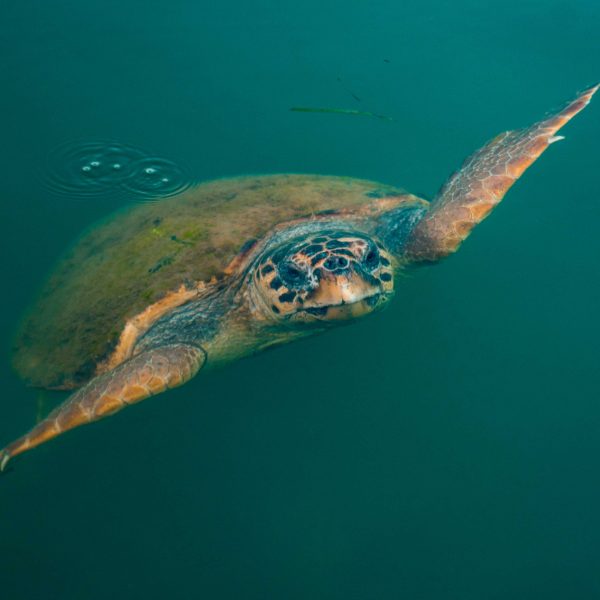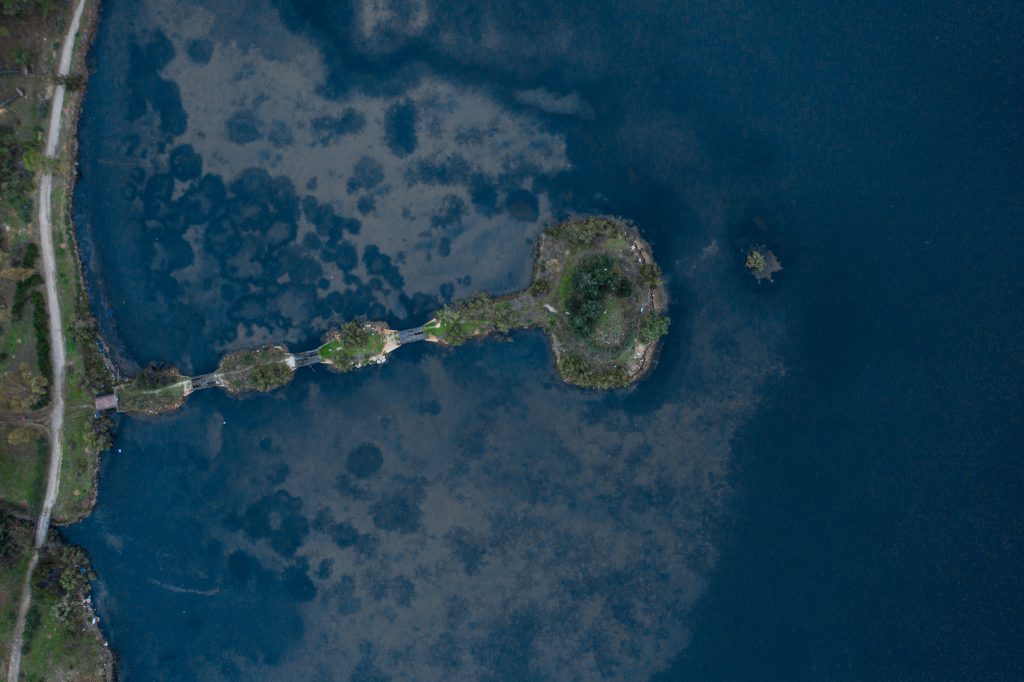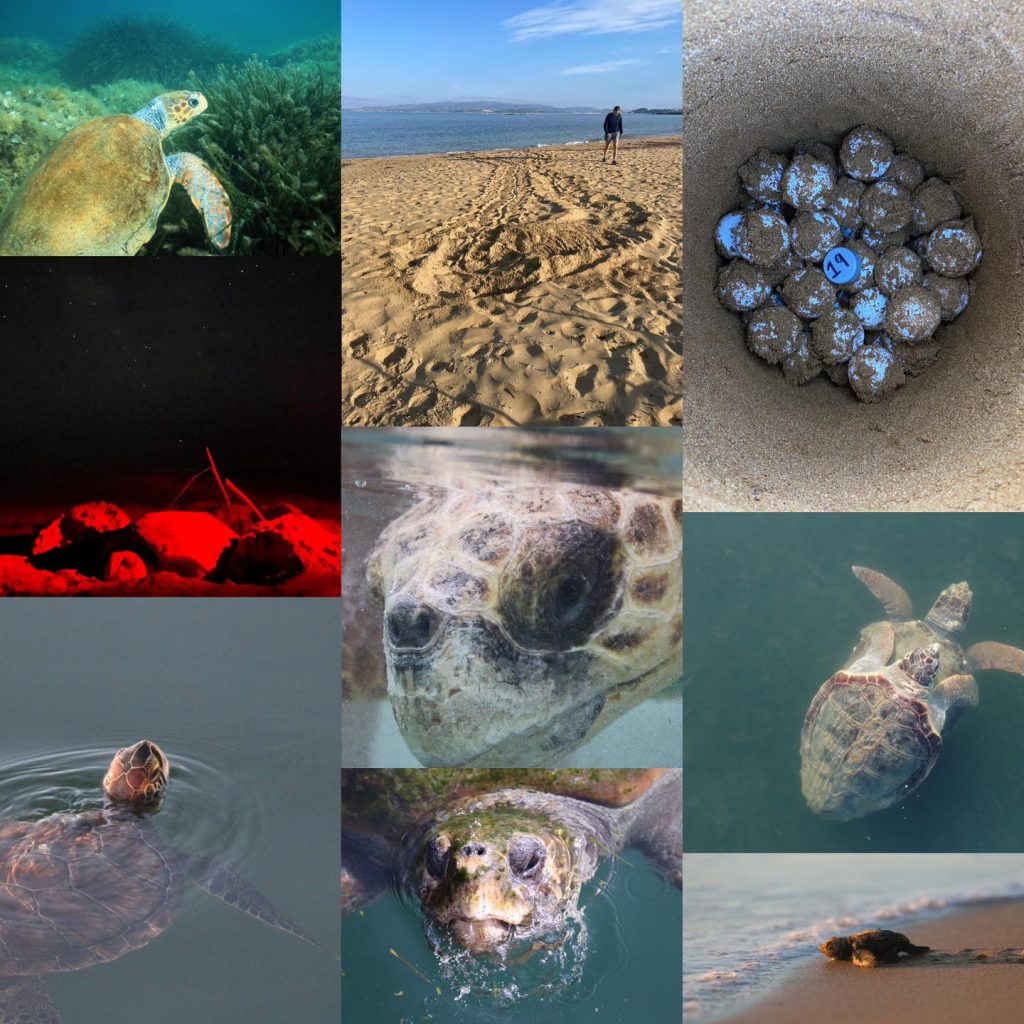
Sea turtles provide us with a beautiful story of endurance and hope. Their ancestry goes back more than 200 million years, placing them among the oldest vertebrates on the planet. Despite the continents shifting and several mass extinctions occurring in that time, sea turtles have survived with little change in their biology. In recent years, their populations have severely declined due to human interference in their environment, but it is also human conservation initiatives that are helping them survive.
Turtles in Kefalonia
Kefalonia is both a nesting and a foraging area for sea turtles. Α local sub-population of loggerhead turtles migrate to the southern shores of the island in early spring to mate. By the end of May, the females begin swimming near their favourite beaches. They crawl onto the sand during the night and try to find suitable spots for their eggs. They can spend several hours and valuable energy to find a spot with the best possible conditions. If they can’t find one, they return to the sea and try again. Once they find the right spot, they dig a vase-shaped egg chamber, lay an average of 92 eggs, cover them up, and return to the sea. They will have no other contact with their offspring. Each turtle can lay eggs every two weeks, from three to five times during the summer. By the middle of August, the mothers have laid all their eggs and begin to migrate to their foraging areas. They won’t return to reproduce for two or three years, until they’ve managed to again accumulate enough energy reserves, in the form of body fat, for this most exhaustive part of their life cycle.

Seven to eight weeks after a nest was laid, the small hatchlings will begin tearing through the eggs, digging up to the surface in groups, and try to crawl through the quickest path to the sea. They are active at night, when the sand is cool, and most predators can’t see them. In each of these stages, saving valuable energy can make the difference in their already small chance of survival. The ones that make it will stay in the open Mediterranean Sea, away from any shores, for many years and only return to Kefalonia 15 to 25 years later to continue this cycle of life.
The bay of Argostoli
The harbour of Argostoli and the Koutavos Lagoon are an important foraging area for the region’s sea turtles. This area, deep in the bay of Argostoli, is shallow, sheltered, and rich in nutritious food for sea turtles. During spring, summer, and autumn, one only needs to walk along the bridge or behind the fruit and fish markets to spot a number of turtles swimming along, feeding off the harbour wall and the sea floor. Some turtles fight between them for some of the scraps that a small number of misinformed locals and visitors throw in the water. Even during winter, a number of sea turtles choose to remain in the bay instead of migrating to warmer waters.
Many turtles come here in spring to mate, even if they will later travel outside Kefalonia to lay eggs. During April and May, it is not uncommon for Wildlife Sense researchers, using special survey methods, to count more than 100 sea turtles in the bay at the same time. Through tagging and photographic identification, more than 360 individual sea turtles have been identified here over the course of a year, and many more over the last decade.
The vast majority are loggerhead sea turtles (Caretta caretta), but a small number of them are juvenile green sea turtles (Chelonia mydas). This separate and even rarer species does not reproduce in Kefalonia or anywhere in Greece. Their nesting areas are further east in the Mediterranean basin. They too spend their first few years in life in the open seas. It is believed that Argostoli, due to the sheltered nature of the bay, is one of the first coastal areas some of these young turtles visit to find nutrient-rich food and grow towards adulthood.

Threats
Sea turtles are globally at risk of extinction, and their future is uncertain. Their populations are declining because adult and juvenile turtles very often get caught in fishing gear or are hit by high-speed boats or propellers. They are also being poisoned by ingesting plastics and by accumulating pollutants through the water they swim in and through their food. Their nesting areas are degraded by mismanaged “development” and become less suitable due to climate change; they are becoming too hot for incubation and the beaches themselves are eroding away. These threats are not distant stories; they are also happening here in Kefalonia.
To say that fishing or tourism must stop to save the turtles is misguided. The activities themselves do not depend on the decline of sea turtles. These industries thrive on the leisure and produce of healthy ecosystems. The notion of conflict between economic development and conservation can, and sadly often does, put a stop on constructive dialogue.
With science-based conservation, we study each threat, consider existing and design new research, and we propose management actions and regulations based on the results. Based on decades of scientific research from around the world and from Kefalonia, we know specific measures that will help protect sea turtles and preserve their ecosystems. But these guidelines are not a luxury. If they are not implemented and enforced consistently, sea turtles will certainly decline. Our current protection measures are merely buying time until their ecosystems become safe again. The amount of required interference to protect them could have long-term consequences through changes in natural selection that we may not even understand.
Many of these management guidelines are part of a recently drafted and currently under public consultation Special Environmental Study that outlines available regulations and management actions for the protection of sea turtles and much of their ecosystems in the Ionian Islands. While it is 20 years late, it is a sign of hope for the future of sea turtles in Kefalonia. Fishing and tourism will be required to follow management practices, under the supervision of the Natural Environment and Climate Change Agency, which are aimed at protecting sea turtles and their ecosystems, among other wildlife, but also to keep these industries on a sustainable path for their own benefit.
The work of Wildlife Sense
While state regulations are slowly taking shape, Wildlife Sense has been studying and protecting sea turtles in Kefalonia for over a decade. Volunteers walk along the beaches every morning during the nesting season (May-August) to locate new nests and protect them, and to monitor previously marked nests during their incubation. When the hatchlings begin emerging (July-October) the same teams check each nest and look for the tracks of little hatchlings. Hopefully those are heading towards the sea. In many areas, light pollution misorients hatchlings. Our teams spend many nights on the beach to ensure all emerging hatchlings head to the sea.
We also monitor the population of adult and juvenile turtles with the goal of proposing additional management methods to protect them, as they are mostly found in unprotected areas, outside the Natura 2000 network. We sadly find many sea turtles with injuries each year. Our staff and collaborating vet have acquired years of experience in sea turtle treatment and rehabilitation. Many turtles are treated locally and released, but some are sent to the Sea Turtle Rescue Centre in Athens for long-term rehabilitation. As this journey is very stressful for the animals, one of our long-term goals is the creation of a much-needed Sea Turtle First Aid and Rehabilitation Centre here in Kefalonia.
Unfortunately, many sea turtles do not survive their encounters with humans. In the last ten years, we have recorded more than 200 sea turtles on the shores and floating in the water after drowning due to longline or fishing net entanglement, speed boat and propeller collisions, and other non-natural causes.

Public awareness
In our years of experience, we have learned that one of the best ways to help sea turtles and promote their conservation is through public awareness. Through learning and understanding, young people including school children can develop an understanding of the impact of their and their family’s choices on the world they live in. Even for people who may find their interests in conflict with the protection of sea turtles, we have often seen angry opposers turn to supporters and collaborators after they gain a better understanding not only of the heavy impact on the turtles but also of the simplicity of the methods that can help protect both their interests and the turtles.
What you can do
If you plan on visiting Kefalonia, here are a few guidelines you can follow to limit any possible impact of your visit to sea turtles:
- You can visit the harbour of Argostoli and walk along the DeBosset bridge in the morning or evening to observe sea turtles as they are swimming along. Please do not feed them or try to touch them. Both in the harbour and along the coast of the island, do not approach the turtles in the water, either while snorkeling or on a boat.
- Enjoy all the island’s beaches during the day. Leave any marked sea turtle nests undisturbed and walk along the beach near the water instead of the back of the beach or the sand dunes. Make sure to take down any sand castles and remove any obstacles from the beach before leaving.
- In any case, do not disturb a sea turtle.
- If you see an injured sea turtle, a damaged nest, or any turtle being disturbed, please contact us here: https://wildlifesense.com/en/contact-us/ .
When in Kefalonia, you can check our Facebook page for any scheduled informational events: https://www.facebook.com/WildlifeSense/ .



